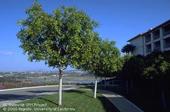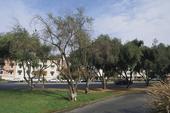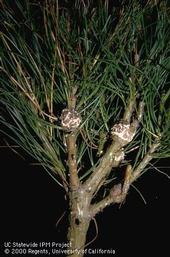- Author: Lauren Fordyce

The UC IPM Urban & Community Program hosts monthly webinars that are free and open to the public. Join us every third Thursday from 12pm-1pm for helpful pest related information. All webinars are recorded and posted on the UC IPM YouTube channel soon after.
Upcoming
10/20/22: Trees for a Changing Climate
With fall finally here, now is a great time to plant trees and shrubs. However, before you head to the nursery, consider attending this webinar on Trees for a Changing Climate. On October 20, 2022, UC ANR Environmental Horticulture Advisor Janet Hartin will discuss some underutilized trees that are heat, drought, and pest resistant. Sign up...
- Author: Belinda J. Messenger-Sikes
- Contributor: Karey Windbiel-Rojas

- Author: Melissa G. Womack

This week much of California is under a heat advisory or excessive heat warning, with high temperatures estimated to range from 90 to 108 degrees. Many home gardeners are wondering how they can help their plants, trees, or shrubs survive the intense summer heat.
“We are getting a lot of inquiries around the state from people worried about how the extreme temperatures are going to affect the plants or trees in their yards,” said Missy Gable, director of the UC Master Gardener Program. “With a little extra planning, you can help your garden beat the heat and survive the hot summer weather.”
UC...
- Author: Janet Hartin

[From the Spring issue of the UC IPM Retail Nursery & Garden Center News]
Most disorders impacting landscape trees result from abiotic (non-living) disorders rather than attacks from biotic (living) pests like plant pathogens, insects, and vertebrates. Damage caused by abiotic and biotic disorders can appear similar, making diagnosis difficult at times. For example, discolored leaves on a Ficus nitida tree could be due to drought stress, a fungus, or a nutrient toxicity or...

This time of year, deciduous trees go dormant, and evergreen trees such as pine are more visible in the landscape. Pine trees, like other plants, can suffer from attack by pests, whether on your property or in our forested areas in California.
Pine trees do best when planted in well-drained soil in full sun, and most species need little water once established. Trees can ward off attacks by many insects and diseases if taken care of properly.
Several diseases can affect pine trees, such as rusts, blight, and root rot. Disease symptoms vary, but may include discoloration of leaves or needles, cankers, galls, and ooze.
Pine trees are susceptible to damage by over 20 different kinds of insects, including aphids,...


